Városliget, Budapest’s City Park, is a favorite destination for locals and visitors thanks to its many attractions including a zoo, several museums, a castle, medicinal baths and even an amusement park.
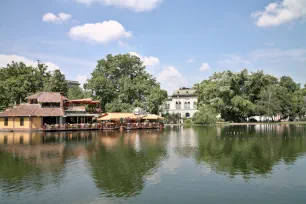
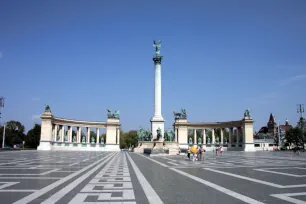
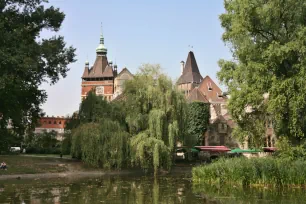
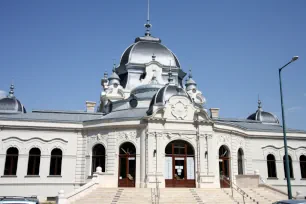
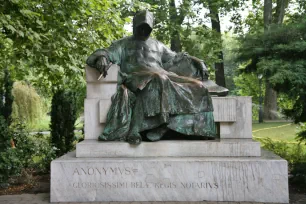
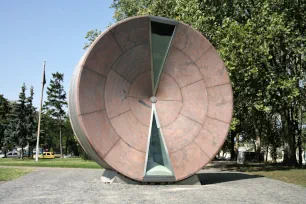
Completed in 1896, in time for a variety of celebrations marking one thousand years of Hungarian history, this 1.2-square-km (302 acre) park has everything you need for an enjoyable day, from a pretty pond to a number of interesting historic sites.
Heroes’ Square
The park’s main entrance is through Heroes’ Square, one of Hungary’s World Heritage sites. On the square, you’ll find the Millennium Monument, the Museum of Fine Arts, and the Műcsarnok, all worth a visit. The latter is considered to be the finest exhibition hall in Hungary.
Vajdahunyad Castle
Another centerpiece of Városliget is the rather bizarre Vajdahunyad Castle, originally built of cardboard and wood in honor of the millennium. The structure was built in a variety of architectural styles ranging from Romanesque to Gothic, intended to represent each century since the arrival of the Magyars. It was so popular that it was rebuilt in brick.
The Pond
The City Park Pond is a great place to rent a row boat (at least when it’s not dried up), but if you’re in Budapest in the winter, you can ice skate there instead. When it freezes over, it becomes the largest outdoor skating rink in Central Europe. The main entrance building, originally erected in 1893 in a Baroque style, is quite impressive.
Anonymus Statue
Art aficionados might enjoy the sculptures situated throughout the park, including those of both Winston Churchill and George Washington. Both, surprisingly, made it through the Cold War unscathed.
The most famous statue however is the statue of a monk, sculpted in 1903 by Miklós Ligeti. Very little is known about this monk, whose name is even unknown, so he is now referred to as Anonymus (Latin for anonymous). This mysterious monk lived in the twelfth century as the notary of King Béla III. He is credited as the writer of the first book of the history of the Hungarians, the ‘Gesta Hungarorum’. Touching the monk’s stylus is supposed to bring good luck with your studies.
Timewheel
Two large modern monuments can be found at the southern edge of Budapest’s city park. The Timewheel (Időkerék), a huge granite monument, was unveiled on April 30, 2004, the day Hungary joined the European Union. The monument is situated near Műcsarnok, at the site of a former Lenin Statue that was removed in 1993.
The Timewheel weighs sixty tonnes and has a height of eight meters (26 feet). It was conceived and created by János Herner to a design by István Janáky. The Timewheel works like an hourglass: sand trickles down from the top to the bottom through a small opening in the glass. At the end of each year, the wheel is supposed to be turned 180 degrees, a manual process.
Monument to the Uprising
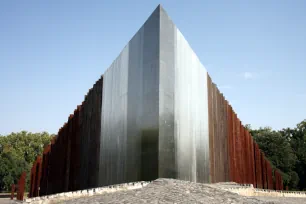
A bit further westward stands another large monument, known as the 56-os emlékmű (Memorial of ’56), also known as the Monument to the Uprising. The memorial commemorates the revolt of the Hungarians against the Soviet occupation in 1956.
The memorial is shaped in the form of a wedge with a 56-degree angle. Rusty iron beams gradually increase in height and become more polished towards the intersection point. The memorial symbolizes the joined forces of Hungarians coming together as they carve through communist rule. Its design has resulted in the nickname Vaskefe (iron brush). The monument was unveiled in 2006, on the fifty-year anniversary of the revolt.
Museum of Etnography
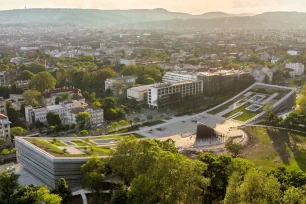
City Park is also home to a couple of modern buildings. One of them houses the Museum of Ethnography, which moved in 2022 from its former location across Parliament House to a brand-new building on the southern edge of the park. The museum shows the customs and habits of different cultures across the world. Its collections are divided into geographical regions (Europe, Africa,…) and types of objects (ceramics, costumes,…).
The collection is housed in a modern building that rises from the ground like a ramp on either side of the Monument to the Uprising. From the side, it resembles a book lying open on its spine. The unique building was designed by NAPUR Architect, a local architecture office firm.
House of Music
Just north of the Etnography Museum is another modern building with an even more futuristic architecture. Surrounded by trees, at first sight it looks like an alien spaceship just landed in the middle of the park. The building features 100 holes in its dome, which is shaped like the cap of a mushroom. It was designed by the Japanese architect Sou Fujimoto and houses an interactive concert and music education center. It opened to the public in early 2022.
Széchenyi Baths
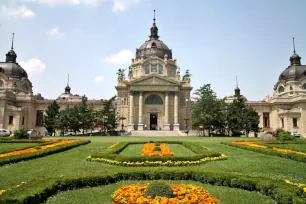
One of the crowd-pullers in Városliget is the huge Széchenyi Bath complex (Széchenyi gyógyfürdő), one of the world’s largest baths and also one of the hottest thermal baths in Budapest.
The palatial entrance building was constructed between 1909 and 1913 to a Neo-Baroque design by Győző Czigler and Ede Dvorák. In front of the building stands a statue of Zsigmondo Vilmos, the geologist who discovered the thermal spring that feeds the pools. Thanks to the heat of the water, the outdoor pools are open year-round.
Vidám Park and Zoo
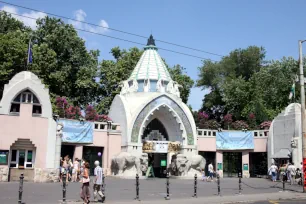
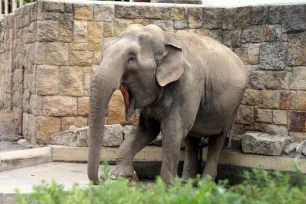
Városliget is also home to Budapest’s small but historic amusement park, Vidám Park. The park is home to a handful of very historic rides, including the 1906-built merry-go-round, the cave railway (1912), and the park’s most popular ride, the Hulluymvasut, a wooden roller coaster. Built in 1922, it is one of the oldest roller coasters in the world.
Near Vidam Park is the Zoological Garden (Állartkert), one of the most popular attractions in Budapest. The zoo was created in 1866, but most of the buildings date from the early twentieth century, which explains the Art Nouveau style of many zoo buildings. The Elephant house in particular is worth a look. But the attention of most zoo visitors goes to the animals, and the Budapest zoo has plenty of them, including lions, polar bears, gorillas, crocodiles, elephants and rhinos, just to name some of the most popular species.
Near the zoo’s entrance is another child-friendly attraction: the Budapest Grand Circus (Fővárosi Nagycirkusz), which bills itself as the only circus in Europe houses in a permanent stone building.

